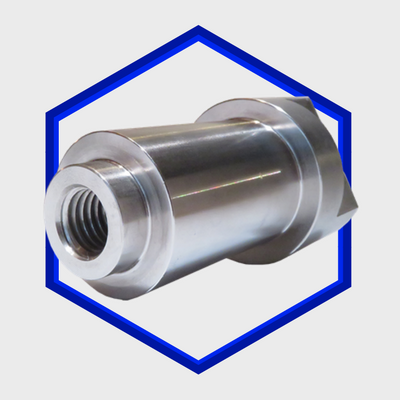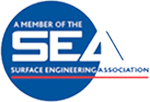Types of Corrosion
Corrosion is a broad phrase used to describe the attack and deterioration on metals. There are several different types of Corrosion.Here is a broad overview...
General Corrosion
General or Uniform Corrosion is called such as it will proceed in a uniform manner onto an exposed surface and this will corrode in a steady and predictable way. This is most often caused through the wrong selection of materials for their operating environment as well as corrosive elemnents such as moisture, oxygen or heat.
Pitting
“Pitting” takes the form of small cavities within the metal and can be one of the most damaging to the component. Pitting is often difficult to detect and one of the more damaging forms of corrosion and occurs where a thin oxide film is damaged and doesn’t re-passivate. This results in the pit cavities which can rapidly perforate the wall thickness of the metal.
Crevice Corrosion
This is similar to Pitting in that it a form of corrosion that will affect a specific location as opposed to an entire surface. Crevice Corrosion can be caused through acidic conditions or a depletion of oxygen and are most often associated with stagnant micro-environments affecting components such as Gaskets, Washers and Clamps.
Filiform Corrosion
This type of corrosion will occur underneath a painted or plated surface and is caused by way of a water breach. Filiform Corrosion normally starts out as small, sometimes microscopic defects in the coating and spreads to cause structural weakness. Lacquers and “Quick Dry” paints are the most susceptible to Filiform Corrosion.
Galvanic Corrosion
Galvanic corrosion occurs when two dissimilar metals come into electrical contact. This can often lead to deterioration in one of the metals even where the component is operating in an environment that would normally not be considered corrosive. In order for Galvanic Corrosion to occur two electrochemically dissimilar metals must be in electrical contact with each other and exposed to an electrolyte.
Environmental Cracking
A corrosion process which as its name suggest appears as crack formation within the metal, environmental cracking can be caused by a number of different factors including stress, temperature and chemical environment. The main kinds of environmental cracking would be; Stress Corrosion Cracking, Hydrogen Induced Cracking, Hydrogen Embrittlement, Liquid metal Embrittlement and Corrosion Fatigue.
Flow Assisted Corrosion
This form of corrosion is directly related to its environment and occurs when a protective layer of Oxide is dissolved or removed most often by water or wind, which then exposes the base metal, accelerating the rate of corrosion.
Fretting Corrosion
Fretting is a form of wear damage that occurs through the repeated rubbing, contact or vibration of a component. Fretting Corrosion will occur on the surface of the parts and will appear visually as pits and grooves. Components that are exposed to vibration often encounter Fretting Corrosion and common components would be bolted assemblies and bearing found in impact machinery.
High Temperature Corrosion
High Temperature environments encourage damaging Oxidation, Sulfidation and Carbonation. Nearly all useful metals will become vulnerable to gases above a certain temperature and this will lead to scaling, loss of material and changes in physical properties.
De-Alloying
This form of corrosion affects a specific element in an alloy and is also known as Selective Leaching. There are a few different examples of this, Decarburisation is the selective loss of carbon from an alloy after contact with chemicals. Denickelifcation is the loss of Nickel form an alloy as is most commonly seen in Copper- Nickel Alloys after extended periods in fresh water. Similarly Dezincification is the loss of Zinc from an alloy which is found when Copper-Zinc Alloys that contain less than 85% Copper have extended periods in water containing dissolved oxygen.
Combatting Corrosion
As we see above Corrosion takes many forms and will affect nearly every material and be present in a wide variety of environments. In order to prolong the life cycle of components they will undergo a variety of metal finishing processes. Silchrome Plating are based in Leeds UK and offer a wide array of plating, coating and painting options to suit your application. We are fully ISO 9001 and 14001 certified and offer everything from Chrome Plating to Molykote.

.png)
.png)




